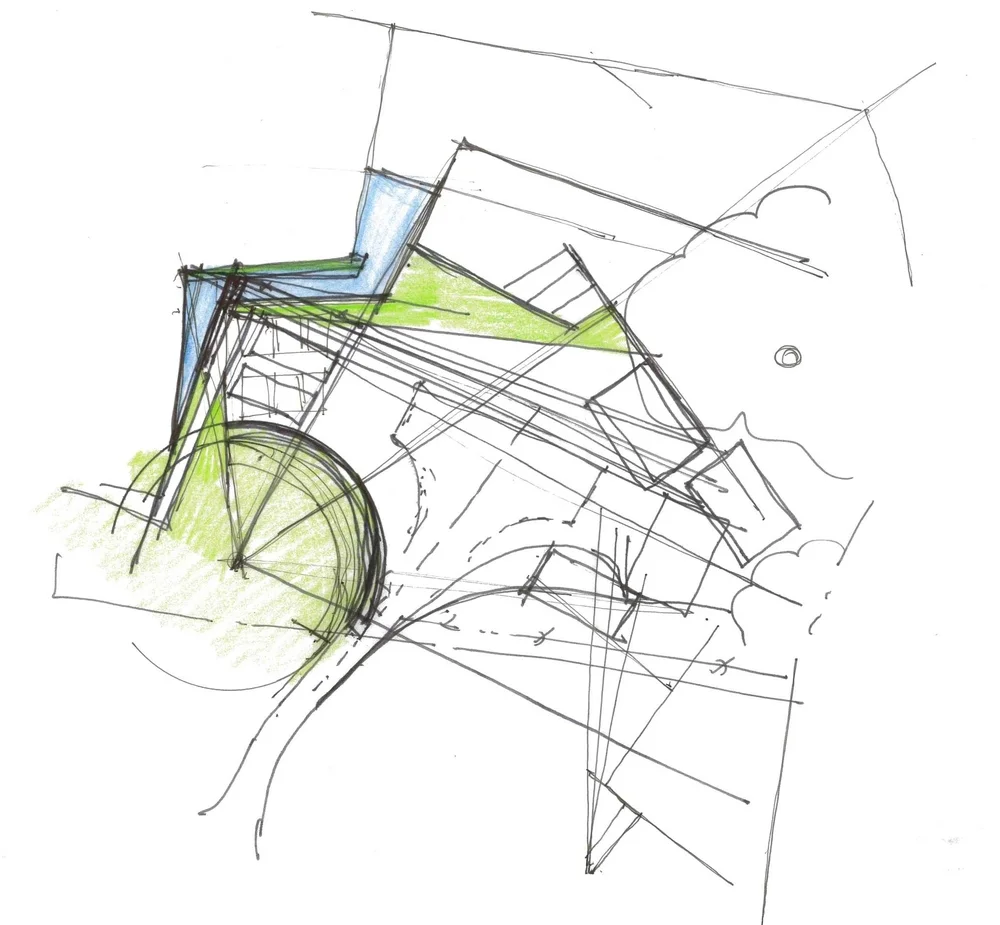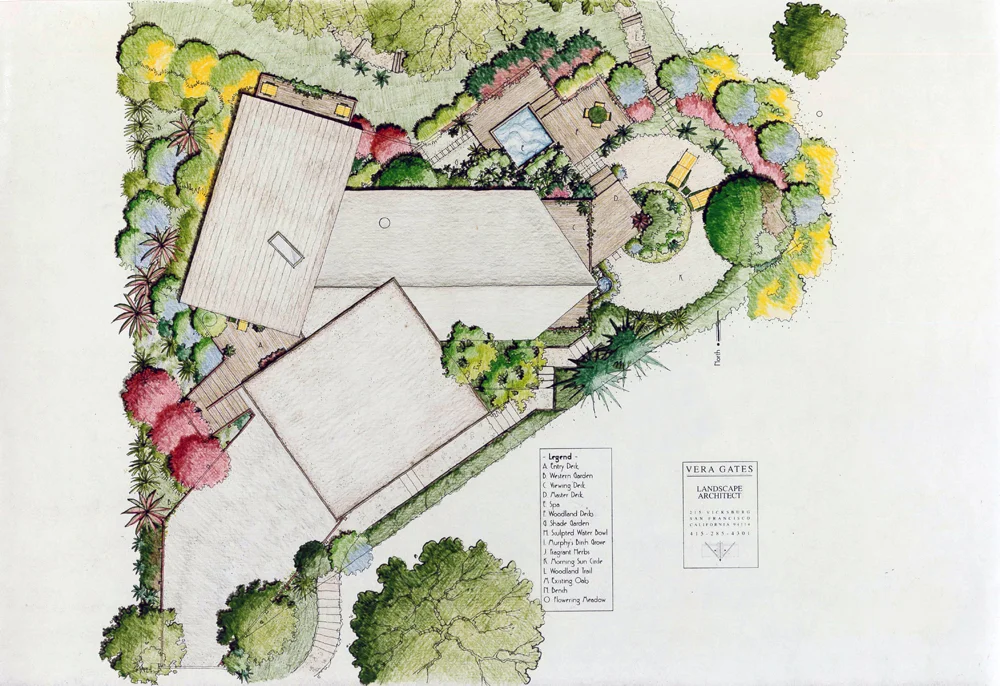Garden Geometries
Designing gardens inspired by geometry and mathematical formulas
By Vera Gates
Within the Arterra Studio, we are engaged in an active dialog around the design process, and how ideas evolve. Emerging designers want very much to expand their reach and delve more deeply into design. They are comfortable responding to functional requirements, but struggle with form generation, especially the “big picture” ideas that give a place great meaning.
This has challenged us to explain how we create design form and how we guide these forms as they evolve into a beautiful, functional garden. We thought this a good time to take a look at our archive of master plans, which so eloquently convey our design methodology and demonstrate the generative power of geometry as a design tool.
As an artist and landscape architect, I am fascinated by geometric form. I love the rules of engagement with geometry and the limitless possibilities to be found with basic geometric forms. Beginning design in this way gives me the tools I need to beautifully order space. It is this comprehensible ordering of space that is essential to my design.
The human eye seeks beauty, harmony and order. It is within the composition of space that our eye can rest and we have a good sense of our place in the world. We are by degree comforted, inspired or awestruck, according to the form and order of the space we inhabit. We see and acknowledge such a design of space and call it beautiful, because it’s in such places that our hearts sings and we find peace.
Geometry is the mathematics of shapes. Design is the arrangement of those shapes into a comprehensible and ultimately beautiful and functional order. There are basic rules of engagement, upon which we can build and expand. The interpretation of form can be playful, creative and endlessly variable.
Our designs are a combination — a fusion — of geometric forms, according to the site, topography and architecture. This is a creative and highly interpretive process, after all. I readily admit to reinterpreting these geometric forms as my heart desires. This geometric interpretation is how each garden begins to tell its own unique story of place, and how the design evolves.
There is typically one overall form that commands the space, and within there are other supporting forms and associated geometries. This combination of forms establishes a design hierarchy and provides depth, dimension and visual interest throughout the garden.
The functional aspects of the garden (the program elements) evolve within the form, as the design progresses and details are worked out. It is amazing how often all the functional aspects rather naturally fall into place within a strong, overall geometric form. In fact, we find that if the design is guided first by form, the interpretation of functional elements has a far greater capacity for unique interpretation.
Throughout this series, we will explore garden geometries drawing from archive of design drawings. We will explore a variety of geometric shapes and combinations of forms, and demonstrate in plan view how these forms emerge as uniquely beautiful garden designs.




